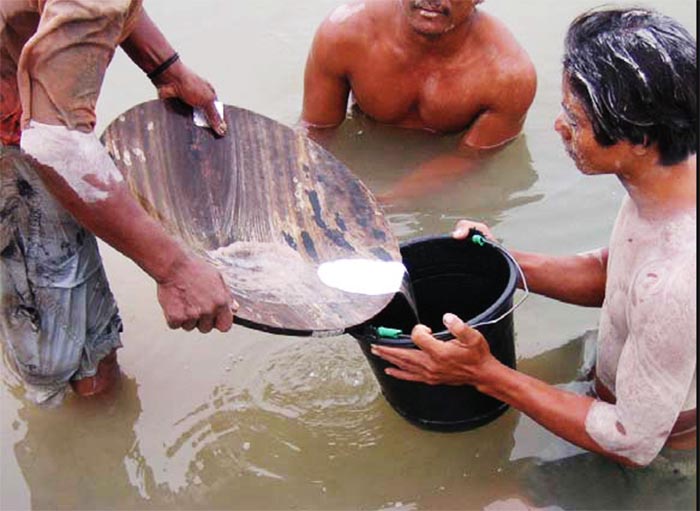The use of mercury in artisanal mining to maximize gold recovery among small scale miners in parts of South America continues to attract international attention in the face of an absence of legal restraints and actual enforcement regimes.
The problem, it seems, has reached a level of concern, sufficiently disturbing, to cause it to get the attention of the United Nations. While the profligate use of mercury is known to be prevalent mostly across poor countries in South America, Bolivia is increasingly being fingered as one of the highest on the list of hemispheric offenders. Reportedly, one of the few countries on the continent that is yet to ban the importation of the lethal chemical, sections of the gold mining sector are believed to openly facilitate its use in illegal mining.
An October 2022 UN report drew particular attention to the country’s high rate of mercury use and its profligate distribution, its application in gold recovery resulting in the pollution of entire watersheds and the poisoning of animals and members of indigenous communities. While some Bolivian government officials have reportedly called for a ban on the importation of mercury, its role as an agent in optimizing gold recovery, particularly among small scale miners in the country, makes an effective ban difficult to enforce. To make matters worse, the Bolivian gold mining sector is reportedly replete with illegal operations that are not the subject of any official oversight. It is the priority that the miners, including large numbers of Bolivia’s impoverished, place on earnings from gold mining that mostly drives the proliferation of mercury use in the sector. Mercury has long been confirmed as a chemical element which, when inhaled can inflict permanent brain and lung damage. In Bolivia and elsewhere in South America, children who are part of gold recovery operations reportedly have ready access to mercury.
While the affliction rate is usually highest among persons working with the chemical, since it serves as particularly useful in separating gold from other particles, mercury has been known to claim victims who live in proximity to mining sites where it is used. Mercury also spreads through watersheds, eventually seeping into rivers where fish and other freshwater animals absorb it, thereby compromising the food chain. While some countries in South America have banned mercury imports, its popularity in the gold-mining sector has given rise to illegal importation and a consequential black market regime on which sales thrive.
In Brazil, the mining of gold in some hard-to-reach locations in the Amazon reportedly places restraints on mercury imports, notwithstanding existing customs regulations that govern the importation of the substance, including the requirement of a permit that governs the use of mercury in the gold mining sector. Here in Guyana, while the government has continually railed against the use of mercury in gold mining, failure to access the furthest reaches of the country’s vast gold-bearing interior locations has meant that it is difficult, if not impossible, for any clear determination to be arrived at in the matter of the extent of mercury use in artisanal mining. Back in 2017, government had launched the ‘El Dorado’ project, designed to eliminate mercury use in small-scale artisanal gold-mining which benefitted from funding provided by Conservation International and UN Environment. Little, however, is known about the application of the initiative and the extent to which it impacted the use of mercury in artisanal mining. Back in August this year, the Guyana Geology & Mines Commission made what was no more than a passing reference to its role in “strengthening the enabling framework for………..mercury reduction in small scale gold mining” though prohibition of the chemical’s use in the sector has not been known to be an issue that has come under the strictest scrutiny by the state agency.
Reportedly, in an effort to help combat the problem within this important sector of its economy, Guyana has launched a new effort to eliminate mercury use from small-scale artisanal gold mining. The new project, backed by the Global Environment Facility and other partners, including Conservation International and UN Environment, will assist Guyana with converting to mercury free mining by 2025. It plans to do this by involving business enterprises in the supply chain that will produce and market responsibly mined mercury-free gold from El Dorado.





